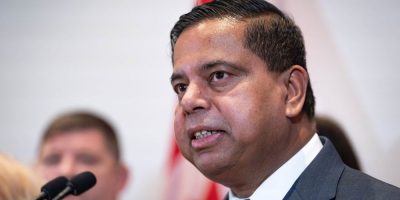
By Lee Berthiaume in Ottawa
Prime Minister Justin Trudeau's government wasted no time in joining the West’s rush to send battle tanks to Ukraine, with Defence Minister Anita Anand announcing Thursday that Canada will donate at least four Leopard 2s to the embattled country.
The announcement came one day after Germany and the United States revealed plans to send battle tanks to Ukraine after weeks of hesitation. Berlin also said it would allow other countries that possess German-made Leopards to do the same.
Appearing alongside chief of the defence staff Gen. Wayne Eyre at a news conference on Parliament Hill, Anand said Canada will be providing four Leopard 2A4s in the coming weeks, as well as trainers, ammunition and spare parts.
"This donation, combined with the contributions of allies and partners, will significantly help the armed forces of Ukraine as they fight heroically to defend their nation's freedom and sovereignty," she said outside the House of Commons.
"These tanks will allow Ukraine to liberate even more of its territory and defend its people from Russia's brutal invasion."
Anand left the door open to sending even more tanks in the future, though she also emphasized the need to ensure the Canadian Army has enough of the heavy weapons to train and defend the country and its NATO allies.
The four tanks that Canada is sending to Ukraine are being drawn from the Army’s current inventory of 82 Leopard 2s designed for battle, which former Army officers have said are already stretched thin.
“The number of Leopards that we are donating has been carefully considered in order to ensure that our own Army has the tanks needed to maintain our own readiness to train and to meet Canada's NATO commitments," Anand said.
The minister promised the four tanks would be replaced as soon as possible, though it remained unclear when that would be. Canada previously donated four M777 howitzers that were also being used by the Army, but which have not been replaced.
Ukraine has implored western allies to send main battle tanks for weeks as its forces struggle to make gains against Russian forces in the east of the country. There are also fears of a possible Russian counter-offensive in the spring.
The German government had been reluctant to provide tanks without a similar agreement from the U.S., over fears of further escalating hostilities from Russia. Berlin was also hesitant to let allies that have Leopard 2s send them to Ukraine.
Those hesitations evaporated on Wednesday when German Chancellor Olaf Scholz and U.S. President Joe Biden pledged that their countries would provide tanks to Ukraine, opening a floodgate to donations from other allies as well.
Officials have said the goal is for allies to provide Ukraine with 88 Leopards, which would make up two battalions.
Alexandra Chyczij, national president of the Ukrainian Canadian Congress, which represents Canada's large Ukrainian diaspora, praised the government's decision, describing Leopard 2s as "a game changer" in the war with Russia.
"The sooner Ukrainian forces drive the Russian invaders from sovereign Ukrainian land, the sooner peace will return to Ukraine and to Europe," she said in a statement.
Canada's donation is noticeably smaller than those of other countries such as Germany and Poland, which have each promised 14 tanks. But other European allies are reportedly considering smaller donations more in line with Ottawa's decision.
Retired Lt.-Gen. Marquis Hainse, who previously commanded the Canadian Army, praised the Leopard 2's combat capabilities, describing the tank as "an ace in the deck of cards" for Ukrainian forces.
But while he is supportive of sending some tanks to Ukraine, he suggested Canada's "modest" donation was evidence of a "lack of redundancy" when it comes to the Canadian military's inventory of such weapons.
"Bottom line: I welcome both the German and Canadian decision on the Leopard 2 deployment to Ukraine, but would also warn against the danger of depleting our own capabilities in the process," he said in an email.
Canada started to obtain Leopards from the Netherlands and Germany in 2007 to protect Canadian soldiers fighting in Afghanistan. They have since become a key part of the Army's makeup and doctrine.
The Leopard 2A4s are one of five different versions of the tank owned and operated by Canada. They are also the most numerous and basic of those designed for battle, with two other variants possessing upgraded armour, sensors and weapons.
Eyre said the military has used the donated tanks for training, but they are combat-ready and similar to the Leopard 2A4s that Poland and other allies are sending to Ukraine.
"That will allow us to have interoperability of training, of spare parts and ammunition," he said.
It was not immediately clear which units would provide the four tanks being donated. Most of the Leopards are divided between three squadrons of 19 tanks each, with two located in Edmonton and a third at Canadian Forces Base Gagetown, N.B.
The Royal Canadian Armoured Corps School in Gagetown also has about a dozen Leopards that are used to train tank crews and mechanics, while a handful are located at a repair and maintenance depot in Montreal.
This report by The Canadian Press was first published Jan. 26, 2023.
— With files from The Associated Press.
Banner image: THE CANADIAN PRESS/David Smith





